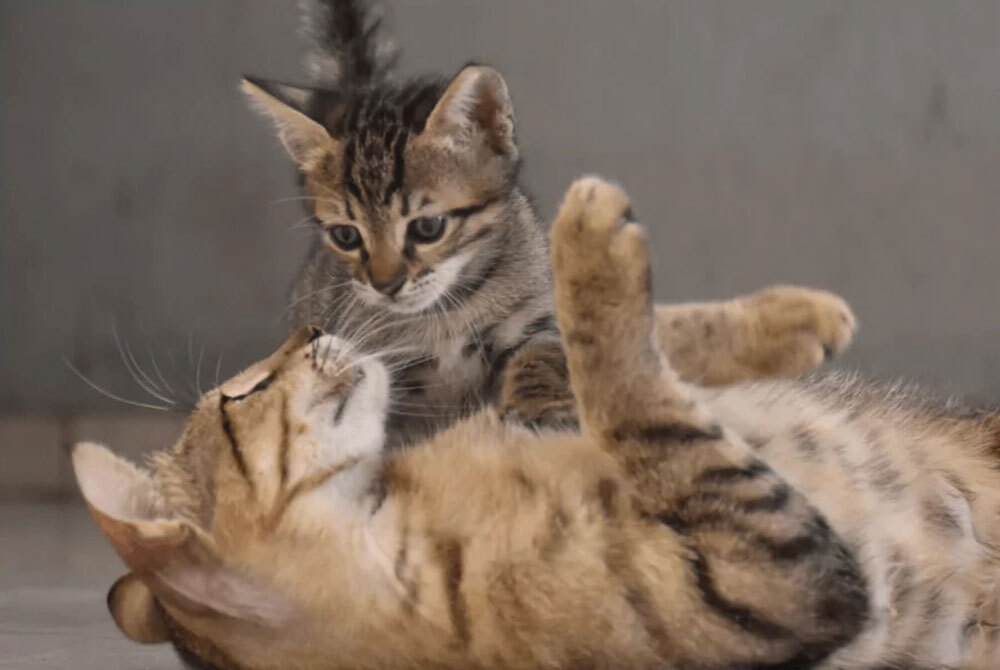By Heather Jelks| Animal Care Center Castle Pines, CO Follow these general rules for any type of new pet introductions:
- Always make new pet introductions in a controlled setting.
- Plan the introduction for a time when you can all spend at least an entire day together.
- Be patient, speak encouragingly in a calm voice, and praise good behavior.
- For their own safety, keep new pets separated from each other when you are away from home.
- Always supervise interactions until you are 100% sure that the two pets are getting along.
Types Of Kitten Introductions
- Cats Meeting Other Cats
Cats are territorial creatures, and they don’t usually like to share their space with other cats. You may need to keep the two cats separated until they are accustomed to one another. Make sure that they each have their own litter boxes—an extra one is even better. Keep their food and water dishes separated; try placing them on opposite sides of a doorway. Use toys to help them interact and play together.
- Cats Meeting Kittens
Cats mark their territory by rubbing their heads and faces everywhere – on doorways, furniture, clothing—leaving their scent behind. Incorporate the new kitten’s scent into your household smells, so that your cat gets used to the kitten’s scent. Pet them both a lot! Try swapping blankets around or wiping your kitten’s head and face with a cloth and then placing that cloth under your older cat’s food dish.
- Cats Meeting Dogs
First, create a safe space for your cat. Make sure that your cat has a secure place to retreat, and place your cat’s food, water and litter somewhere that is not accessible to the dog. Before you bring your new dog home, give them lots of exercise and a good meal so that they are as calm as possible during the introduction. Keep your dog leashed, but let your cat roam freely. Your cat’s first instinct might be to hiss and run and hide—this is perfectly normal. If your cat becomes curious about the newcomer and ventures a sniff, this is a good indication that they could become great companions.
- Cats Meeting Puppies
Keep the puppy on a leash whenever your cat is in the same room. Always praise your puppy for calm behavior around your cat. Set up separate rooms for your cat and the new puppy; a barrier like a baby gate will allow them to interact and sniff each other. After they both seem comfortable with the new situation, try swapping rooms so that they can grow more accustomed to each other’s smells. Make sure your cat has ample perches that are out of the puppy’s reach
- Meeting Pets of Other Species
It’s difficult to tell whether dogs and cats will cohabit well with rabbits, birds, lizards, or other small pets. Extra supervision is always required. Cohabitation will depend on the personality of your cat or dog, and whether or not they consider small animals as prey. Cats will usually hunt birds, just as dogs will usually chase rabbits. Behavior training can help prepare dogs for accepting other animals, but some breeds will instinctually hunt smaller animals. Make introductions in as controlled a setting as possible, and observe your pet’s body language carefully.
- Meeting Kids and Babies
Small children might seem frightening to new pets – they make loud, unexpected noises and sudden movements that can startle some animals. When startled, they might instinctually bite or scratch. Never leave children and new pets unsupervised. Teach children not to disturb pets while they are eating or sleeping, how to touch them gently, and how to play with the pets. Eventually, they will become best friends.














Leave A Comment